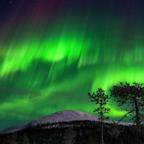Comet Explodes Like Volcano
July 31 -- Stargazers at Johns HopkinsUniversity said Friday they received a bonus when a comet theywere monitoring erupted like a volcano, giving them anunexpectedly detailed look at how these icy space objects erode.
The LINEAR comet, named for the Massachusetts Institute ofTechnology team that discovered it in September, was beingstudied by the research group using NASA’s Hubble SpaceTelescope.
Scientists were looking to delve into the comet’scomposition earlier this month when the eruption occurred.
“We lucked out completely,” said Harold Weaver, chiefreasearcher of the LINEAR study, describing the sight as a“surge of brilliance.”
Without the clarity of the Hubble Telescope—about 10times better than most ground-based telescopes, and about 500times more powerful than most home telescopes—the event wouldhave received little attention from researchers.
Hubble was able to magnify the comet and measure the rapidincrease in brightness as it erupted even though the comet was74 million miles (120 million km) away from the earth’s surface.
Volcano in the Sky
The outburst was likened by scientists to a volcanicexplosion, though temperatures below the surface of the cometare about minus 100 degrees Fahrenheit (minus 75 C).
Johns Hopkins researchers cannot say what caused theeruption, but theories include the sun vaporising away thesurface or a buildup of gas pressure below the surface.
Icarus-Like Comet
Eruptions increase in frequency the closer comets get to thesun. Weaver and his team believe there is an increase inactivity because comets such as LINEAR have a very fragile and“fluffy” composition, making them easily susceptible to thesun’s heat.
LINEAR reached its closest point to the sun on Wednesday, 72million miles (115 million km) , explaining why the comet’soutbursts have grown more frequent, and the resulting light evenbrighter.




